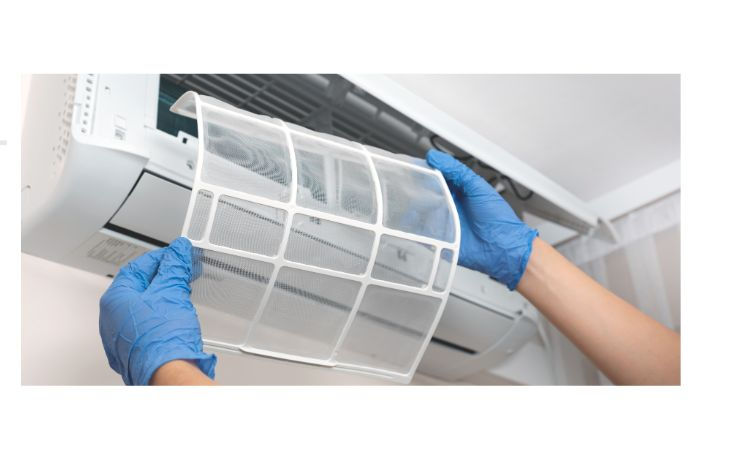Cooling the Future: United States Air Conditioners (AC) Market Insights
- ankit Vijayran
- Sep 4
- 4 min read

When summer temperatures rise, air conditioners are no longer a luxury—they’re a necessity. In the United States, where extreme weather events are becoming more frequent and energy efficiency is at the center of household choices, the air conditioners (AC) market is evolving rapidly. From cutting-edge smart cooling systems to environmentally friendly refrigerants, the industry is not just about comfort anymore—it’s about sustainability, technology, and cost-effectiveness.
This blog explores the United States air conditioners AC market trends covering its growth trends, technological shifts, consumer preferences, and what lies ahead for homeowners and businesses.
Market Overview: A Growing Demand for Cooling
The U.S. air conditioners market has been on a steady rise, driven by increasing urbanization, rising disposable incomes, and a surge in demand for energy-efficient appliances. With states like Texas, Florida, and California experiencing long, hot summers, cooling solutions have become indispensable in both residential and commercial spaces.
Residential units, particularly split ACs and central cooling systems, dominate the market, while the commercial sector—including offices, malls, and healthcare facilities—is fueling additional demand. The growing emphasis on indoor air quality after the COVID-19 pandemic has also increased adoption, as modern ACs often come with advanced filtration and humidity control features.
Key Factors Driving Market Growth
Several trends are shaping the U.S. AC industry.
Rising Temperatures and Climate Change
Heatwaves are becoming more frequent across the country, pushing households and businesses to invest in reliable air conditioning solutions. This direct impact of climate change has been a significant driver for the market.
Energy Efficiency Regulations
Government policies are encouraging the use of ACs with higher Seasonal Energy Efficiency Ratios (SEER). Energy Star-certified models are becoming the norm, as both consumers and businesses seek to reduce long-term operating costs.
Technological Innovation
Smart AC systems that can be controlled via mobile apps or integrated into home automation setups are gaining popularity. Features such as remote diagnostics, voice control, and AI-driven energy optimization are setting new standards in the industry.
Market Segmentation: Residential vs. Commercial Demand
The residential air conditioning segment accounts for the majority of sales in the United States. With more Americans working from home and investing in home comfort, sales of split ACs, window units, and ductless systems are on the rise.
On the other hand, the commercial segment is being fueled by the growth of urban infrastructure. Shopping malls, office buildings, and data centers require high-capacity HVAC systems to maintain consistent indoor climates. Data centers, in particular, are becoming a critical market as they require uninterrupted cooling solutions to function efficiently.
The Shift Toward Eco-Friendly Refrigerants
One of the most transformative changes in the market is the shift from older refrigerants like R-22 to eco-friendly alternatives such as R-32 and R-410A. These newer refrigerants reduce greenhouse gas emissions and comply with international environmental standards. Manufacturers are racing to innovate AC models that are not only efficient but also aligned with global climate goals.
This shift has created opportunities for companies to market their products as both consumer- and environment-friendly. For buyers, it means peace of mind knowing their appliances meet future-ready standards.
Regional Insights: Where Demand is Strongest
The demand for air conditioners is not uniform across the United States.
Southern States (Texas, Florida, Arizona): Extremely high adoption due to hot, humid summers.
Western States (California, Nevada): Strong focus on eco-friendly and energy-efficient models due to strict environmental regulations.
Northeast and Midwest: Moderate demand, with seasonal peaks during hot summers and growing interest in dual HVAC systems that provide both heating and cooling.
These regional dynamics influence how manufacturers design and market their products, with some tailoring features to specific climate conditions.
Challenges in the Market
Despite its growth, the U.S. AC market faces certain challenges.
High energy consumption remains a major concern, especially during peak summer months when electricity grids are under pressure. Rising electricity costs also make consumers more cautious about investing in less efficient units. Furthermore, supply chain disruptions in recent years have impacted the availability of components, leading to price fluctuations and delivery delays.
Another challenge is consumer awareness. While eco-friendly and smart ACs are available, many households continue to choose traditional models due to upfront cost concerns, even though modern systems offer long-term savings.
Future Outlook: What to Expect
The future of the United States air conditioners AC market looks promising, with innovation and sustainability driving the next phase of growth. We can expect:
Greater adoption of smart, connected ACs that integrate with IoT devices.
Increasing popularity of hybrid systems that combine cooling with heating, offering year-round solutions.
A stronger push for solar-powered air conditioners, especially in states with abundant sunshine.
Broader adoption of eco-friendly refrigerants as regulatory deadlines approach.
For businesses, this means opportunities to capture market share through sustainable practices, customer education, and investment in new technologies. For consumers, it means more choices, better efficiency, and long-term savings.
FAQs: United States Air Conditioners (AC) Market
Q1. What type of AC is most common in U.S. homes?Split ACs and central air conditioning systems are the most widely used, especially in suburban and urban homes.
Q2. Are energy-efficient ACs worth the investment?Yes, while they may cost more upfront, energy-efficient ACs reduce electricity bills significantly over time and add value to properties.
Q3. How often should AC units be replaced?On average, residential AC units last 10–15 years. However, newer, energy-efficient models may justify early replacement.
Q4. What refrigerants are being phased out in the U.S.?R-22 has already been phased out, and more regulations are steering the industry toward sustainable alternatives like R-32.
Q5. What trends will shape the market in the next decade?Smart AC technology, solar integration, and stricter environmental policies will play the biggest role in shaping the industry’s future.












Comments